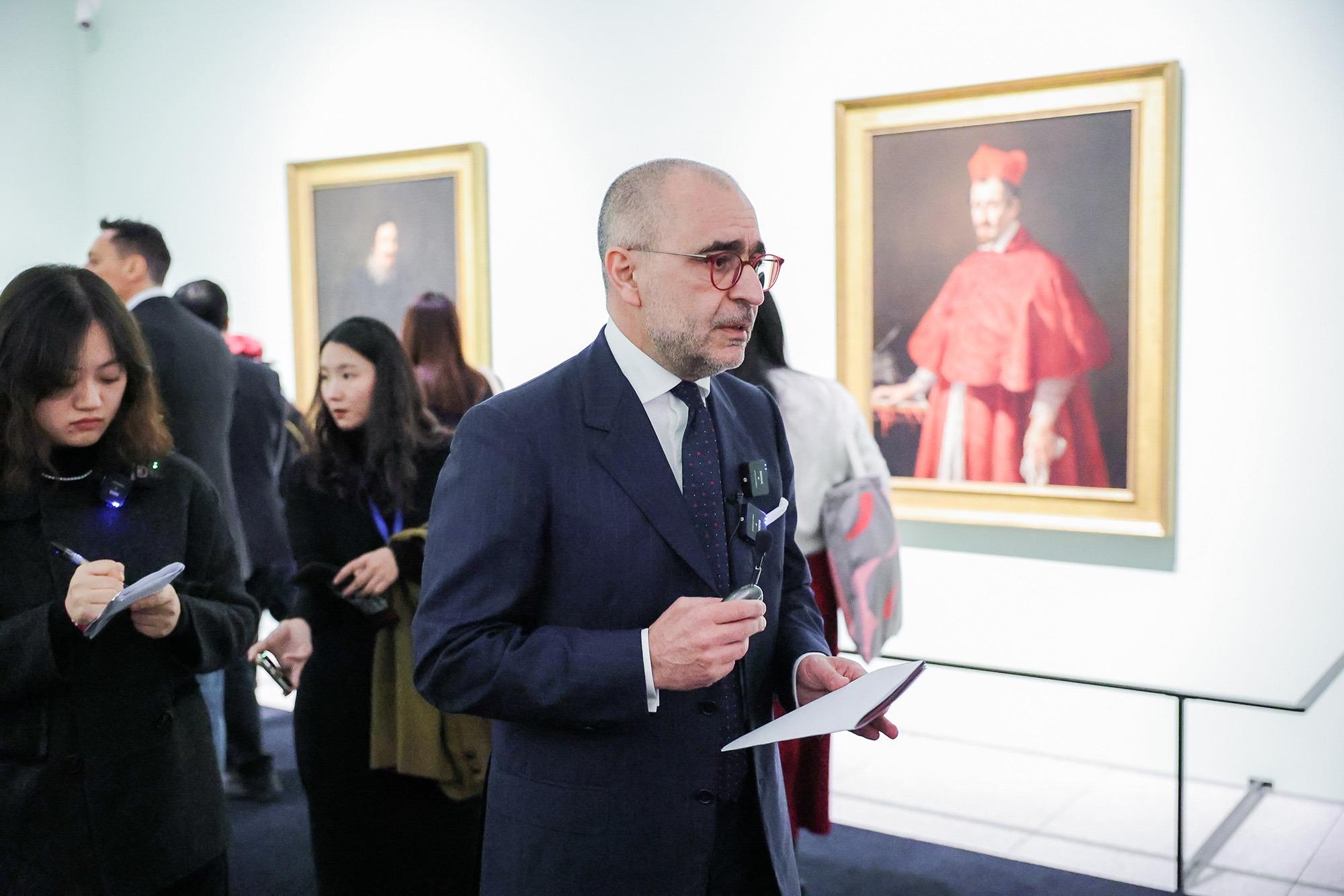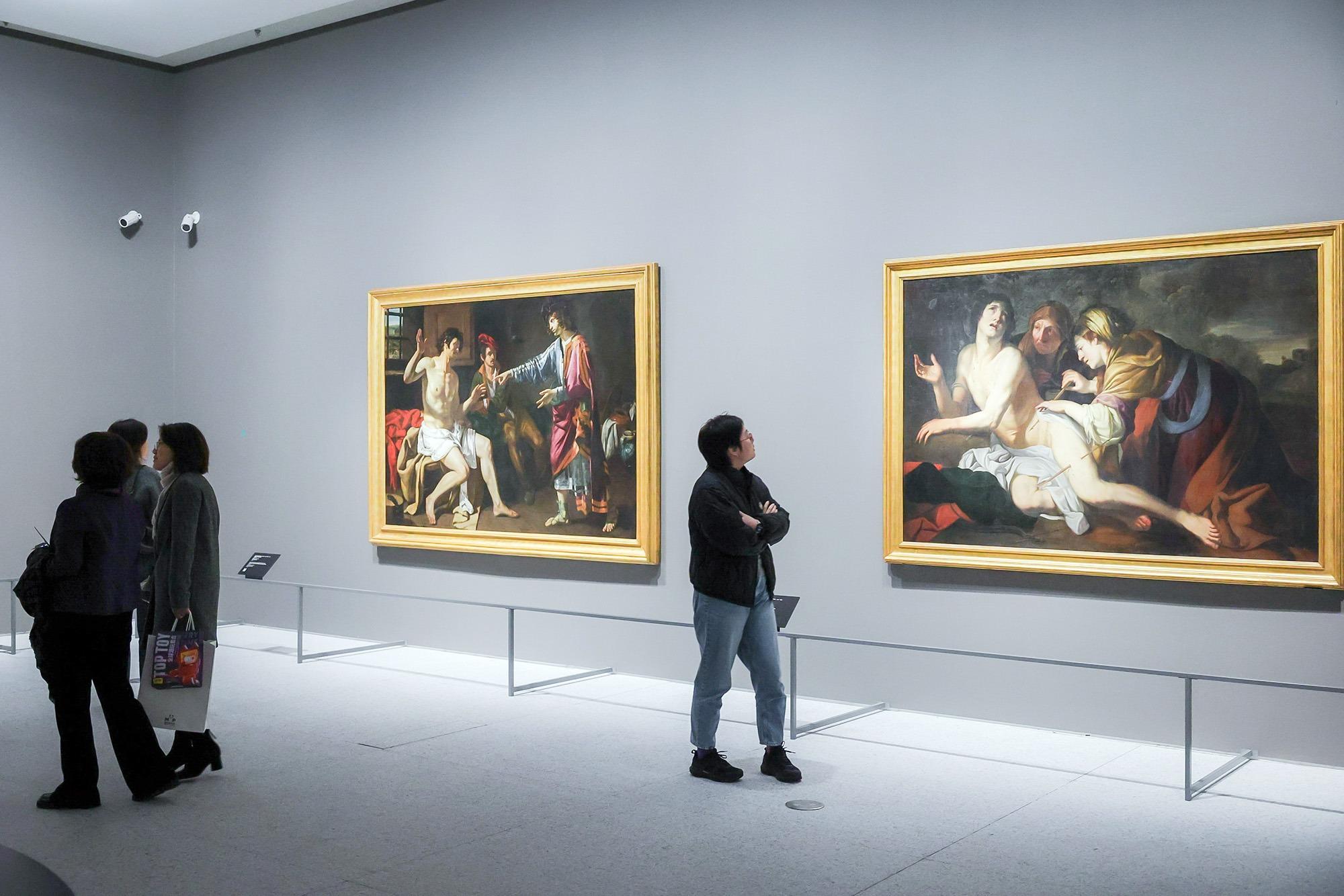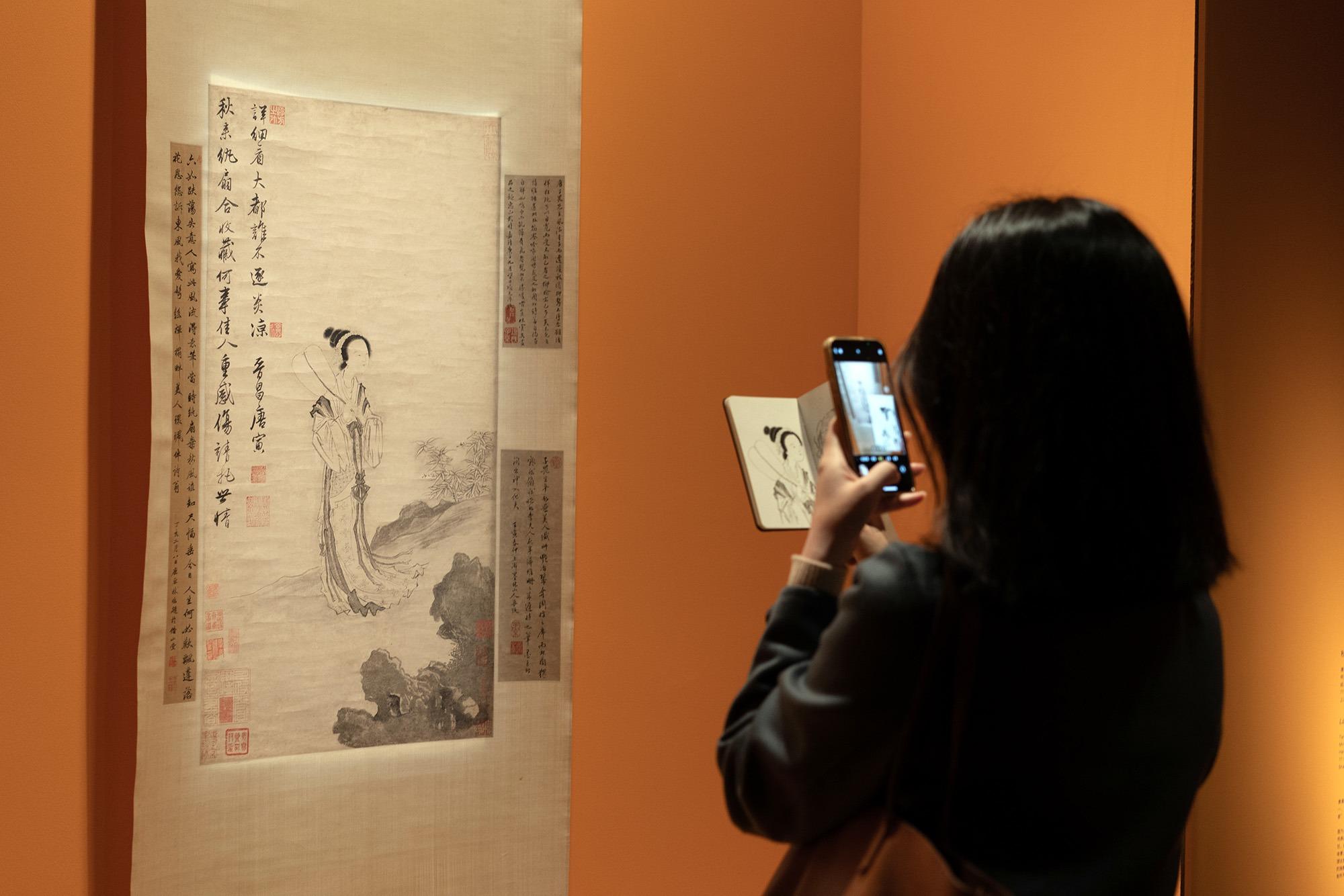Iconic Italian Baroque and Renaissance works are juxtaposed with key pieces by contemporary Chinese artists, Zhang Kun reports.
 Visitors at Shanghai Museum take pictures of Leonardo da Vinci's oil painting, Head of a Young Woman, called The Scapiliata, during the media preview of the exhibition, Who Is Leonardo da Vinci? on Dec 9, 2023. (GAO ERQIANG / CHINA DAILY)
Visitors at Shanghai Museum take pictures of Leonardo da Vinci's oil painting, Head of a Young Woman, called The Scapiliata, during the media preview of the exhibition, Who Is Leonardo da Vinci? on Dec 9, 2023. (GAO ERQIANG / CHINA DAILY)
The Shanghai Museum celebrated the opening night on Sunday of Who Is Leonardo da Vinci? with a gala featuring Chinese and Western classical music.
The performance at the museum echoed the exhibition theme of a dialogue between Chinese and Western Renaissance culture, according to Chu Xiaobo, the director of the institution.
The exhibition, which will run until April 14, features 18 original paintings, drawings and manuscripts by da Vinci and his contemporary Renaissance masters, along with 18 ancient Chinese paintings.
The exhibition is presented by the museum alongside the Istituto della Enciclopedia Italiana-Treccani in Rome, the Veneranda Biblioteca Ambrosiana in Milan, the Complesso Monumentale della Pilotta in Parma, and the Casa Buonarroti in Florence.
Meanwhile, across the Huangpu River, the Museum of Art Pudong is also holding a new exhibition featuring classical Italian masterpieces.
Caravaggio: Wonders of the Italian Baroque, which is showing six original Caravaggio paintings and more than 50 pieces by contemporary Baroque artists from the collection of the Galleria Borghese in Italy, kicked off on Tuesday and will run until April 12.
"It was not coincidence, but a conscious decision, to show Italian art that dates back more than a century in these two important museums in Shanghai," says Francesco D'Arelli, director of the Italian Institute of Culture in Shanghai and the co-curator of both exhibitions.
 Francesco D'Arelli, director of the Italian Institute of Culture in Shanghai, guides a preview tour of Caravaggio: Wonders of the Italian Baroque at the Museum of Art Pudong, on Dec 11, 2023. (PROVIDED TO CHINA DAILY)
Francesco D'Arelli, director of the Italian Institute of Culture in Shanghai, guides a preview tour of Caravaggio: Wonders of the Italian Baroque at the Museum of Art Pudong, on Dec 11, 2023. (PROVIDED TO CHINA DAILY)
He describes the two exhibitions as being different in nature, even though both are showcasing Italian works. The Caravaggio exhibition, for example, gives visitors an overview of the Baroque period, while the showcase at the Shanghai Museum is more focused on the dialogue between Renaissance masters and Chinese artists of the Ming Dynasty (1368-1644).
At the Shanghai Museum, visitors standing in front of da Vinci's La Scapiliata will be able to see this work's "Chinese parallel" in Tang Yin's Lady With Fan in the Autumn Breeze, which is hanging on the opposite wall.
Tang, who is better known as Tang Bohu, was an artist living in the similar time who was just as famous and as significant to China's art scene as da Vinci was in Europe.
"We designed this parallel between Chinese and Renaissance masters in two dimensions. First, we looked for artists from roughly the same historical period and prominence in public perception," says Ling Lizhong, head of the ancient Chinese painting and calligraphy department of Shanghai Museum.
"We also focused on creating a parallel between subjects, such as portraits, horses and bridges. For example, among the exhibits from Italy is Study of Legs, a sketch of the masculine legs by Michelangelo, and parallel to that we have selected from our collection a series of ink paintings by Guo Xu (1456-after 1528). In this series, you will find the vivid depiction of muscle and skeletal structure, though it portrays a demonic figure from Chinese mythology instead of a human being."
 Visitors at the Caravaggio exhibition in Shanghai on Dec 10, 2023. (PROVIDED TO CHINA DAILY)
Visitors at the Caravaggio exhibition in Shanghai on Dec 10, 2023. (PROVIDED TO CHINA DAILY)
Da Vinci also displayed his incredible versatility and created, in addition to art, a slew of inventions, including a helicopter, hydraulic machines and weapons, some of the blueprints of which can be found in his Codex Atlanticus manuscript. One of the exhibits that highlight this is the Watergate Gristmill, a hand scroll created by an anonymous Chinese artist around 960. This artwork depicts an official mill plant with more than 50 people at the scene and is evidence of how advanced hydraulic development was during that period in China.
In addition to the exhibition, Shanghai Museum has opened an interactive hall on its fourth floor, where a wooden model of the gristmill can be found near an autopsy table that pays tribute to da Vinci's approach to studying the human anatomy.
While the paintings on display are classical masterpieces, D'Arelli insists that the exhibition is a contemporary experience for visitors as the design of the space and the use of lights are different from the traditional display of classical paintings.
The main challenge in presenting art exhibitions today is to give a contemporary language to the antiquities, D'Arelli says. "That's why we base all our projects on the design."
The largest showcase of Caravaggio art in China, the scenography of the exhibition is conceived by renowned Italian designer Aldo Cibic, who is also the co-founder of the Memphis Group and an honorary professor at Tongji University, and architect Joseph Dejardin.
 A visitor in front of Lady With Fan in the Autumn Breeze, a painting by Tang Yin, at Shanghai Museum. (GAO ERQIANG / CHINA DAILY)
A visitor in front of Lady With Fan in the Autumn Breeze, a painting by Tang Yin, at Shanghai Museum. (GAO ERQIANG / CHINA DAILY)
Starting from the soft light of the first exhibition hall and ending with Caravaggio's dark world, the exhibits range from small and medium-sized paintings to huge exhibits and items from the Caravaggio Gallery.
To allow visitors to immerse themselves in the Baroque artworks, 38 musical pieces by Baroque composer Claudio Monteverdi (1567-1643) will be played throughout the exhibition space.
If you go
Who Is Leonardo Da Vinci?
Dec 10-April 14, 9 am-5 pm, Tue-Sun.
Shanghai Museum, 201 Renmin Avenue, Huangpu district, Shanghai.
021-6372-3500.
Caravaggio: Wonders of the Italian Baroque
Dec 12-April 12, Mon-Sun, 10 am-9 pm (last admission at 8 pm).
Museum of Art Pudong, 2777 Binjiang Avenue, Pudong New Area, Shanghai.
400-820-8771.
Contact the writer at zhangkun@chinadaily.com.cn


